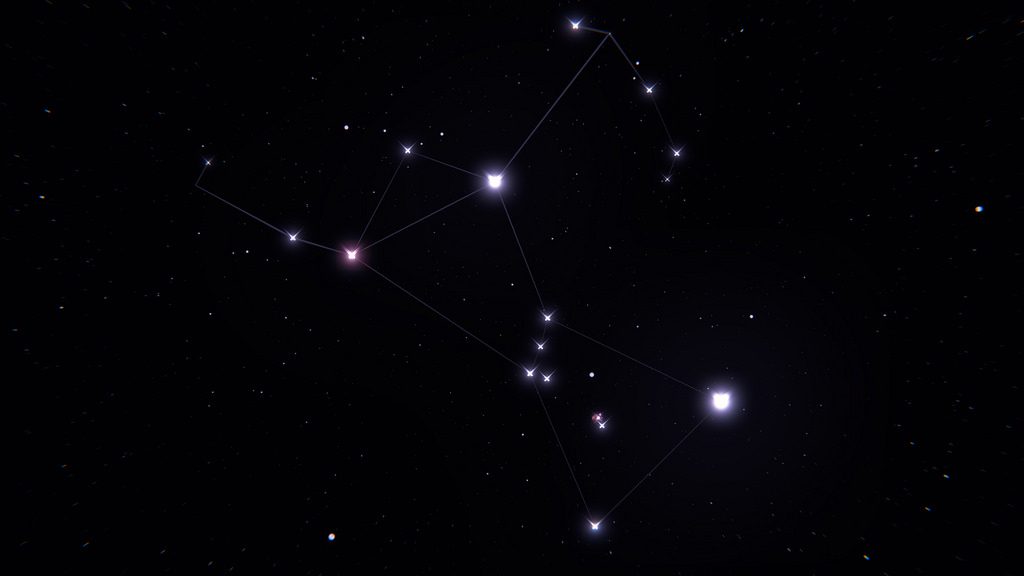
The Orion Constellation is the most noticeable of all the constellations – the one that most people can pick out of the night’s sky without too much trouble. This is because it is one of the brightest constellations in the sky, comprising of two of the brightest stars in the night’s sky and lies on the celestial equator making it easy to spot across the world. You can even spot the Orion Nebula with low to moderate levels of light pollution, making it one of the more accessible astronomical feats. Orion can be seen from November to April. This means if you live in the Northern Hemisphere you can view Orion from autumn to early spring, and if you live in the South Hemisphere you can see it from summer to autumn.
The Orion Nebula, otherwise known as M42, lies just south of Orion’s belt. The nebula is only 1,500 light years away from Earth making it the closest massive star formation region to us. The Orion Nebula is a massive gas and dust cloud that spans around 25 million light years across and has an estimated mass of around 2000 times that of our Sun.
It is believed that the Orion Nebula may contain more than 1000 young stars and 700 stars that are still in their early stages of formation. However, it is difficult to accurately determine the exact amount of stars in the Orion Nebula since it is a stellar nursery where stars are being born, is located very far away, and the gas and dust clouds are somewhat obscuring.

There are different types of Nebula and the Orion Nebula falls into the Reflection/Emission subtype. Reflection nebulae reflect the light of other nearby stars and other nebulae. By contrast, an emission nebulae contain huge amounts of ionized gas that will glow brightly in the night’s sky, displaying a range of different colors. Essentially the Orion Nebula falls somewhere in between and has elements of both subtypes, making it a hybrid of sorts.
The largest stars in the Orion Nebula are four hot and young stars dubbed the “Trapezium” and located at the center of the nebula. These stars are expelling ultraviolet radiation as they form, causing nearby stars and gas clouds to become fluorescent. The Trapezium stars are the “Emission” and the stars they are irradiating are the reflection.

In 2012 an international team of astrophysicists announced something surprising – that there may be a huge black hole at the center of the Orion Nebula. The team used computer modeling simulations to determine that the famous Nebula could have a black hole with a mass 200 times that of our sun.
The simulation calculated that if two stars in the simulation were to get too close, they would merge. In the early days of the nebula, the environment was hot and extremely volatile and these gravitational interactions between stars would have been more common. These collisions eventually resulted in a black hole formation. Scientists believe that the black hole probably isn’t growing much today.
